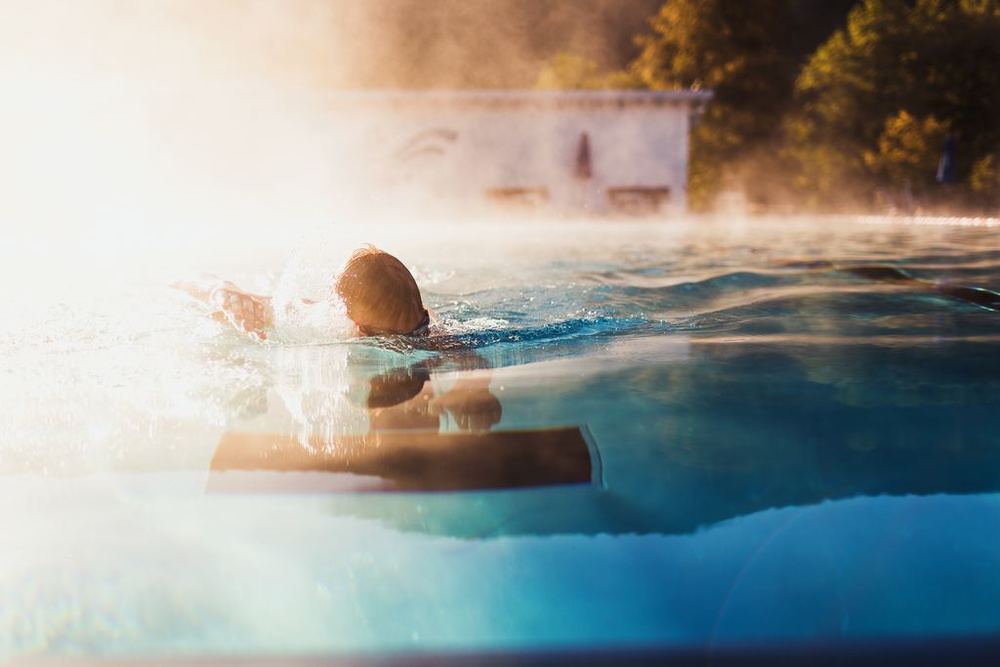The first commercial natural pools appeared several decades ago as a trend in the UK and Europe. They have gradually gained popularity since then, with homeowners and businesses choosing natural swimming pools over conventional chlorinated versions for a number of reasons.
What exactly is a natural pool?
Conventional pools rely on chemicals to keep the water clean and free from bacteria. Typical additives include chlorine granules, ‘pH minus’ formulas, clarifier and algicide – although there are many more to choose from. Failure to maintain these at the proper levels can result in water discolouration, algae and bacteria growth, and itchy skin and eyes post-swimming.
In contrast, a natural pool won’t require any chemicals or salt to keep it clean. Instead, it emulates a natural riverbed by using gravel, reeds and other aquatic plants to remove debris and excess bacteria from the water. Despite what common misconceptions might have you currently thinking, the result is a clean, comfortable pool that allows you to natural swimming safely and conveniently.
Natural pools use an entirely natural filtration system of plants and natural organisms, just like a river or freshwater lake. The only manual input required is a pump to keep the water passing through the filter, and occasional maintenance of the plants and wildlife.
What makes this better than swimming in nature? The “natural” part of the pool is usually contained to a designated area – either one edge of the pool, or an entirely separate section where swimmers don’t need to go.
Why do people want a natural pool?
When it comes to choosing a pool for their home or business, there are certain questions and answers that will shape the swimming pool design. For those who decide that a natural pool is the best fit, it’s usually down to three particular reasons.
Firstly, the lack of chemicals means that it’s less harmful to swimmers and better for the environment. Anyone who is conscious about their impact on nature or wants to promote an organic image to their customers will typically choose a natural pool.
Secondly, natural pools require much less maintenance and are cheaper to run than chlorinated pools. Owners won’t need to keep to a strict regimen of buying and mixing chemicals, checking the pH balance or maintaining a chemical filter. The only routine care a natural pool needs is possibly an occasional surface skim, and regular pump maintenance.
Finally, there’s the aesthetic appeal of a natural pool. The reed bed section can feature a range of plants to create a striking focal piece for landscaping, while the natural water colour blends with outdoor surroundings much better than a chlorinated pool.
Whether a pool is intended for private home use or as part of a business venture, any combination of these factors might be the reason a natural pool is chosen over a chlorinated counterpart.
How does a natural pool work?
The basic elements of a natural pool are a swimming area up to 2m deep and a regeneration zone, sized approximately 1:1 with the main pool, featuring carefully chosen substrate and plants. These two pools should be physically separated by a retaining wall (or even by being on two separate levels).
The filtration system of most natural pools involves several parts. The most recognisable part is the regeneration zone, which is the shallow area dedicated to cultivating certain flora and micro-organisms. The natural processes that occur in this area work to maintain the pool’s ecosystem, competing for nutrients that might otherwise feed algae.
There’s also a fairly conventional overflow channel and/or screen skimmer, which remove build-up on the pool’s surface, such as leaves and oil. Water flows into the top and through a 0.3mm gauge mesh that traps most contaminants but allows water to return to the pool.
Finally, there is the biological fine filter, filled with carefully-chosen aggregate. The water is pulled through using gravity, removing particulate matter down to 100 micrometres. All of this movement is encouraged by the use of a small pump, which can be solar-powered to keep the environmental impact of a natural pool to a minimum.
Is it simple to install a natural pool?
Seeing how closely a natural swimming pool imitates nature, you might think that installing one is relatively straightforward. However, natural pools are acutely attuned to their environment, meaning that they can vary significantly between regions and climates. To make sure that the filter system and regeneration zone are keeping your water safe for swimming, hiring professional pool installers is recommended.

